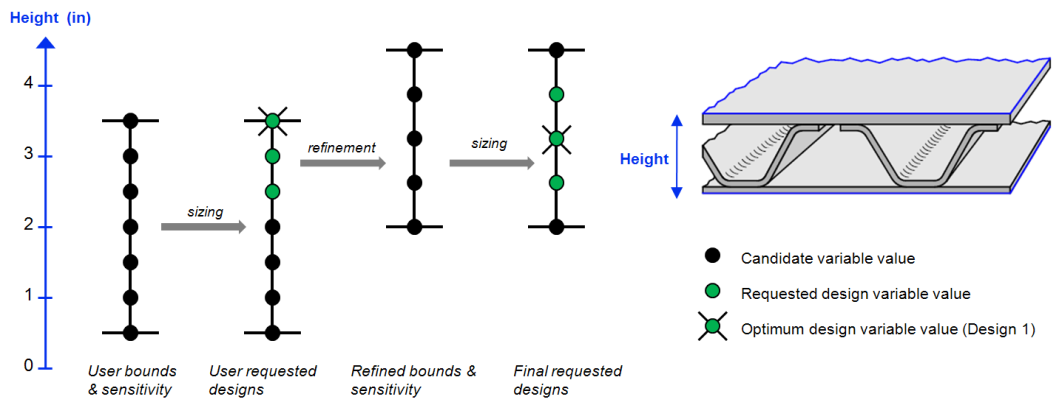
Statistical optimization modifies the values of the sizing variables (dimensions) based on trends observed during an initial sizing. The algorithm is statistical in that it requires a sample population of (requested) designs in order to modify the sizing variables. The minimum value, maximum value, and number of permutations can either increase or decrease. Select the Statistical Optimization check box to activate statistical optimization.

The figure above illustrates the statistical optimization process. First, an initial sizing is performed based on the user-defined bounds. Next, the statistical optimization algorithm analyzes the requested designs and creates new bounds and adjusts the sensitivity (number of permutations). Finally, the component is resized with the new bounds and the final result is returned.
Statistical optimization is best used as a tool to determine appropriate group variable bounds and sensitivity. Group variable bounds (minimum and maximum) should be defined such that the bounds are large enough to envelope the population of lightweight designs. If a returned sizing variable is equal to the minimum or maximum bound, it may indicate that there is still weight remaining, i.e. the design returned may not be "optimum." Also, the number of permutations (sensitivity) should be set high enough to attain nearly optimum designs, but not so large as to increase analysis time unnecessarily.
The figure below shows an example of default sizing of a uniaxially stiffened panel. The optimum unit weight returned is 2.14 psf. The optimum height returned is 1.25" which is the user-defined maximum bound for this variable. Because the resultant height is equal to the maximum height, there may be additional weight savings possible.

The next figure shows the same component with Statistical Optimization selected and the number of requested designs set to 10. The statistical optimization algorithm returns new variable bounds for each sizing variable. For the height variable, the bounds are shifted upwards. The resultant height of 1.625" is significantly higher than the initial user-defined value. Also, the unit weight decreased 15 percent to 1.80 psf.

As a best practice, the final step would be to modify the user-defined bounds to reflect the statistical optimization. At this point, the component can be resized with or without statistical optimization.
